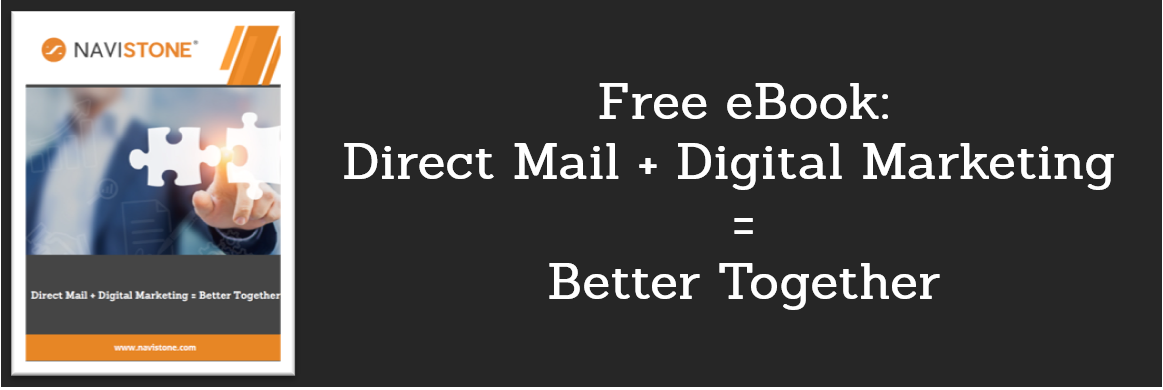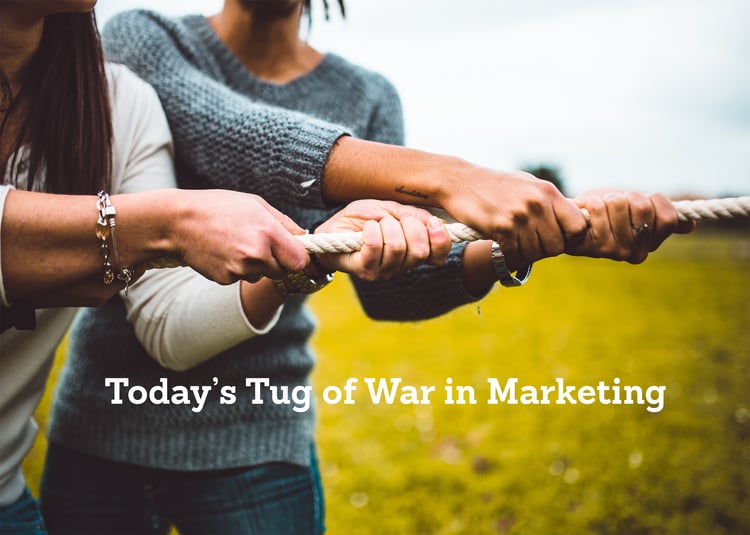This week's blog post is authored by Larry Kavanagh, Chief Executive Officer at NaviStone. In this blog, Larry discusses the necessary balance of marketing and privacy in today's direct marketing landscape, and the importance of continuing to delight our customers.
Today's Tug of War in Marketing
When I’m asked about today’s marketing and privacy environment, my thoughts often go back to my first business, Lagniappe Marketing. It was a database marketing/modeling business that I started in 1998 when PCs had just gotten powerful enough to do real data crunching.
To explain the company name, I told a quaint story about my Mom shopping at her local Katz and Besthoff (K&B), an old New Orleans drug store chain. I loved their nectar sodas and still miss them. Other family members swore by their Creole Cream Cheese Ice Cream.
When Mom was checking out, the store manager, who knew her and all of the local customers, might say something like “Judy, it’s great to see you. Is that husband of yours still working on his novel? Why don’t you take an extra pack of typing paper for him?” And, of course, the typing paper was free.
That little something extra a merchant gives a shopper is called “Lagniappe” in New Orleans. My pitch for Lagniappe Marketing was that I helped my clients use their database to find the right thing to offer a customer at the right time to produce the same kind of customer delight and loyalty that the K&B store manager did.
Everyone I’ve told that story to, whether they are in our industry or not, responds “That is the right way to treat customers.” It increases customer loyalty and builds a great brand image.
When a business delights its customers with the right product and the right offer at the right time, it’s like a Hallmark Channel movie. Everyone feels good about the ending. No one asks how the company did it.
Every marketing innovation that makes it easier for a company to do that “right thing” is made possible by knowing more about a consumer. And that’s where a three-way tug of war happens today, with marketing effectiveness on one side, privacy on the second and how a marketing communication ranks on a consumer’s “delight vs. creep out/freak out” meter on the third.
A good (bad?) example is what happened at the retail store, Target, about ten years ago. They did something similar to the K&B store manager. They sent a piece of direct mail to a customer offering her discounts on maternity clothes and baby furniture. They thought it would delight the customer since she was buying other products that pregnant women tended to buy. They didn’t get the same reaction, though, for a couple of reasons: The customer was a teenage girl and her father, who didn’t know she was pregnant, got the mailing.
In Target’s case, the consumer’s creep out/freak out meter was turned up to 11 (on a scale of 1 to 10). No amount of marketing effectiveness was going to win this tug of war.
Privacy is the combination of identity (PII) and their personal information (PI). How well a company protects this is critical. For a few years, Facebook allowed tech-savvy marketers to access profile data on Facebook users. These users had, in theory, given the marketers permission to see their profile data. The problem is that Facebook’s service also allowed marketers to reach the same data on the Facebook friends of these users. This is how Cambridge Analytica translated permission from 270,000 people into unauthorized access to the personal information and PII of 50 million+ people.
While Target's failures didn’t have a measurable negative effect on the company directly, the jury is still out on whether or not Facebook's mistake will have a short-term or long-term impact on the organization. The fact is, incidents like this do have a negative impact on the marketing environment. They lead to online stories about a dystopian future in which evil marketers abuse privacy.
What gets lost in this dystopian future is the K&B story, where information about a consumer can be used to both produce delight and increase marketing effectiveness.
We built NaviStone to do both.
- We have completely separated consumers PI (browsing data in our case) from their PII (data that identifies who they are). We don’t maintain PII at all. There is no way the type of incident that occurred with Facebook or with Equifax last year could happen at NaviStone. We are the first (and perhaps ONLY) direct mail marketing company to do so and have applied for a patent for the technology we invented to make this happen. We also limit the PI we collect, avoiding keystrokes that browsers enter into open form fields, for example.
- We screen the direct mail creative we send out to make sure we avoid the creep out/freak out factor. We also don’t work in certain industries where data collection is sensitive to the consumer, such as healthcare, and have data use restrictions to help insure we stay on the delight side.
While consumers’ concern about privacy is increasing, so is their desire for better targeted marketing messages. Spam filters are a great example of this. People block messages they don’t want and continue to receive messages that they do.
We can’t go backwards in marketing because consumers today find poorly targeted messages a turn-off. You can spend big money and actually harm your brand’s image if consumers find it annoying.
It’s a puzzle for marketers. How do we avoid the Target and Facebook situations, but also continue to improve relevancy? How do we get more personal in a way that consumers will embrace? The answer is to think about that three-way tug of war with every marketing campaign:
- Am I increasing marketing effectiveness (targeting/relevancy), both in my audience and message?
- Am I (and my marketing partners) protecting the PII and PI of consumers from data breaches?
- Will my marketing message produce delight, or is there a risk of “creep-out/freak-out”?
The simpler days of poorly targeted mass marketing are long gone. We must continue to improve the relevance and delight we offer customers. The key to success in today’s marketing and privacy environment is to get all three sides in this tug of war pulling in the same, positive direction.


Lookalike Audiences Enhance customer acquisition by identifying high-potential prospects, boosting response rates, and lowering advertising costs.
Retargeting Postcards Double the performance of your direct mail retargeting.
Amplify Recognize unknown visitors who are actually customers. Add 20-40% to your ESP/CRM campaigns.
IQ Mail Retain customers with personalized, timely messages for those opting out of digital channels.






Comments